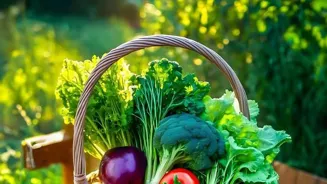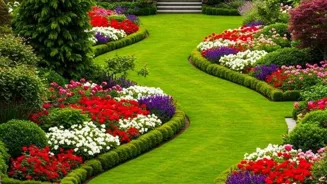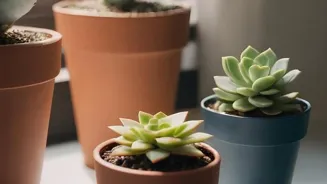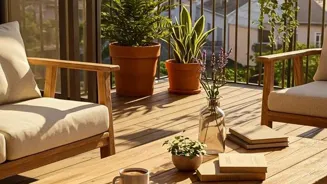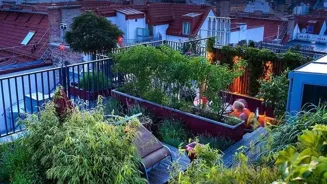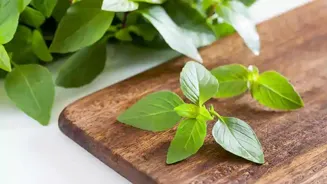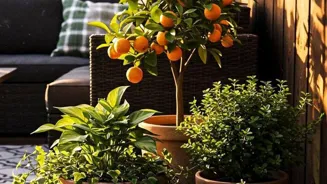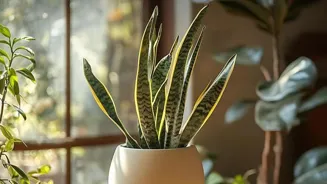Discover the secrets of starting your organic garden. Fresh veggies at your doorstep! Read more for essential tips
Namaste, readers! Are you tired of vegetables loaded with pesticides and chemicals? Do
you dream of plucking fresh, juicy tomatoes right from your backyard and adding them to your sabzi? Well, now you can!

Starting your own organic vegetable garden is easier than you think, and the rewards are immense. Imagine flavorful, healthy produce grown with love and care, right at home.
Don't worry if you don't have a sprawling farmhouse; even a small balcony or terrace can be transformed into a thriving organic garden. Here are eight essential tips to get you started on your green journey.
Location, Location, Location: Sunlight is Key!
Just like finding the perfect spot for your chai corner, choosing the right location for your organic garden is crucial. Most vegetables need at least six to eight hours of sunlight daily to thrive.
Observe your garden area (or balcony) throughout the day to see which spots receive the most sunlight. South-facing areas are typically ideal. If your space doesn't offer full sun, don't despair! You can still grow leafy greens like spinach and lettuce, which tolerate partial shade.
Remember, sunlight is the food for your plants, allowing them to photosynthesize and grow strong! Avoid areas near large trees or buildings that might block sunlight. Consider the ease of access to water as well – lugging heavy watering cans across the garden can be a chore.
Think about wind protection too. Strong winds can damage delicate plants, so consider planting near a fence or wall, or using windbreaks like shrubs or taller plants. Soil is an extremely crucial aspect that determines the health of the plant. A soil test can help in determining the soil ph.
Good soil should be able to hold moisture and should be able to drain excess water. It should contain all the essential nutrients and minerals required by the plants.
Soil Matters: Prepare for Success
Think of the soil as the foundation of your garden – the stronger the foundation, the healthier your plants will be. Organic gardening is all about nourishing the soil naturally. Start by testing your soil's pH level (you can buy a simple soil testing kit online or from your local nursery).
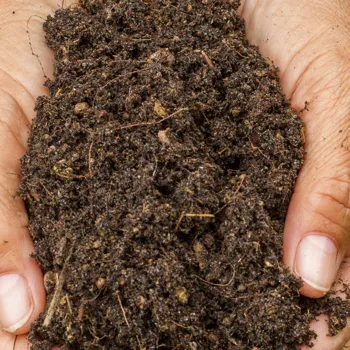
Most vegetables prefer a slightly acidic to neutral pH (around 6.0 to 7.0). Amend your soil with organic matter like compost, well-rotted manure, or leaf mold. These additions will improve drainage, aeration, and nutrient content.
Avoid using chemical fertilizers, as they can harm beneficial soil organisms. Compost is your best friend! It acts like a slow-release fertilizer, providing essential nutrients over time.
You can make your own compost by layering kitchen scraps (vegetable peels, coffee grounds) with yard waste (leaves, grass clippings). Remember to turn the compost pile regularly to aerate it.
Healthy soil teems with life – earthworms, beneficial bacteria, and fungi all play a role in supporting plant growth. Avoid tilling the soil excessively, as this can disrupt the soil ecosystem. Healthy soil leads to healthy plants, and healthy plants lead to a bountiful harvest!
You may consider raised beds or containers.
Choose Your Crops Wisely: Grow What You Love to Eat
Now comes the fun part – selecting the vegetables you want to grow! Start with vegetables you enjoy eating and that are relatively easy to grow for beginners. Tomatoes, chilli peppers, spinach, lettuce, beans, and radishes are all good choices. Consider your local climate and growing season.
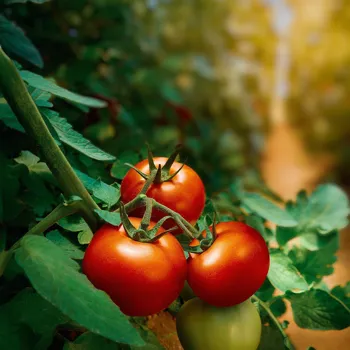
Some vegetables prefer cool weather, while others thrive in the heat. Research the specific needs of each vegetable you choose, such as spacing, watering, and pest control. Don't be afraid to experiment with different varieties of the same vegetable. You might discover a new favorite!
Consider companion planting – planting certain vegetables together can benefit each other. For example, basil repels insects that attack tomatoes. Marigolds are excellent for deterring nematodes (tiny worms that can damage plant roots).
Plan your garden layout carefully to ensure that taller plants don't shade smaller ones. Start small and gradually expand your garden as you gain experience. Growing your own food is a rewarding experience, so enjoy it!
Seeds vs. Seedlings: Making the Right Choice
You have two main options for starting your plants: from seeds or from seedlings (small plants that have already been started). Starting from seeds is more economical and gives you more variety to choose from. However, it requires more time and effort.
Seedlings offer a head start and are ideal for beginners. When buying seeds, choose organic and non-GMO varieties. Look for seeds that are specifically suited to your local climate. Follow the instructions on the seed packet carefully for planting depth and spacing.
When buying seedlings, choose plants that are healthy, with vibrant green leaves and strong stems. Avoid plants that are wilted, yellowed, or have signs of pests or diseases.
Before transplanting seedlings into your garden, harden them off gradually by exposing them to outdoor conditions for a few hours each day. This will help them acclimatize to the environment and prevent transplant shock. Whether you choose seeds or seedlings, remember to handle them with care.
These tiny plants are the future of your garden!
Watering Wisely: Not Too Much, Not Too Little
Water is essential for plant growth, but overwatering can be just as harmful as underwatering. Water deeply but infrequently, allowing the soil to dry out slightly between waterings. Water in the morning to allow the foliage to dry before nightfall, which can help prevent fungal diseases.
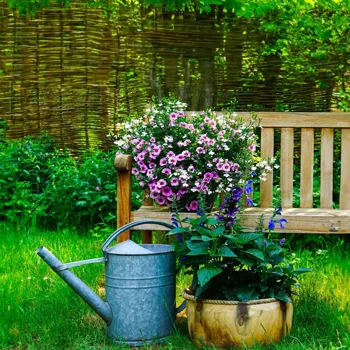
Use a watering can or a soaker hose to water at the base of the plants, avoiding wetting the leaves. This helps prevent the spread of diseases. Mulching around your plants with organic materials like straw or wood chips helps retain moisture in the soil and suppress weeds.
Check the soil moisture regularly by sticking your finger into the soil. If the top inch or two feels dry, it's time to water. Be mindful of the weather conditions. Plants will need more water during hot, dry spells.
Avoid watering during the hottest part of the day, as much of the water will evaporate before it reaches the roots. Water is a precious resource, so use it wisely!
Pest and Disease Control: Natural Solutions
One of the benefits of organic gardening is avoiding harmful chemicals. But how do you deal with pests and diseases naturally? Prevention is key! Healthy plants are less susceptible to pests and diseases. Encourage beneficial insects like ladybugs and lacewings, which prey on common garden pests.
You can attract them by planting flowers like marigolds, sunflowers, and cosmos. Handpick pests off your plants whenever you see them. Use organic pest control sprays like neem oil, insecticidal soap, or garlic spray.
These sprays are effective against many common pests but are safe for beneficial insects and humans. Rotate your crops each year to prevent pests and diseases from building up in the soil. Remove diseased plants immediately to prevent the spread of infection.
Compost diseased plants carefully to kill any pathogens. Healthy soil, healthy plants, and natural pest control are the cornerstones of organic gardening!
Growing your own organic vegetables is a rewarding experience.
It's a chance to connect with nature, enjoy fresh, healthy food, and reduce your environmental impact. So, grab your gardening tools and get started! With a little planning and effort, you can create a thriving organic garden that will provide you with delicious vegetables for years to come.
Happy gardening!
AI Generated Content. Glance/InMobi shall have no liability for the content